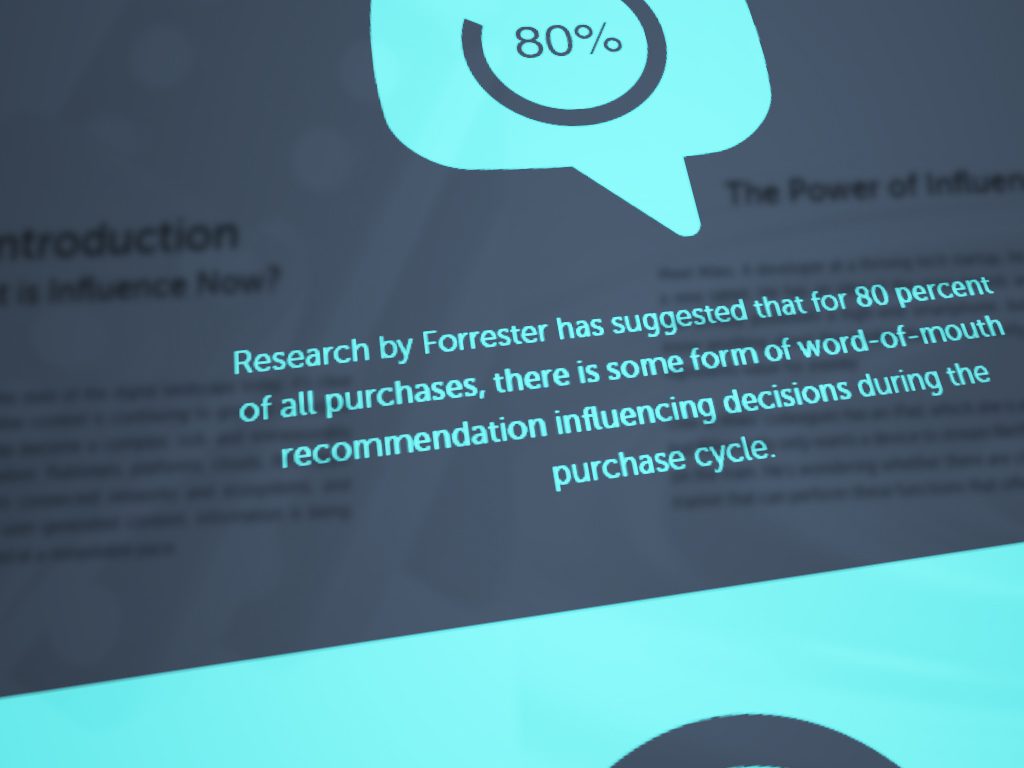In the past few years we have seen a lot of talk around influence marketing. It seems as if marketers have started to realize that we can reach our audience in more than one way, not just shouting out our message. All of a sudden marketers started reaching out to “influentials” and services like Klout started to have success. There was a hype around this topic about two years ago, that hype is gone, but influence marketing is now a standard part of any marketing campaign.
Influence marketing might sound hip and trendy, but it’s actually one of the oldest forms of marketing.
Anyone who has looked at the history of PR knows the name of Edward Bernays (I talked about him in the article I wrote about PR and Marketing before). Bernays, nephew of Sigmund Freud, is to some known as the person who “invented” PR, or at least made it important for business.
Bernays is so important in the history of PR because of his techniques, but mostly because he introduced a different way of thinking to PR (and marketing for that matter). He made the PR man think about who he was targeting, more specifically: what the brain of those he is targeting wants.
Bernays realized that our brains work in mysterious ways. We don’t always do what we think is best for us. He realized (no doubt influenced by his uncle Freud) we are being led by those around us. We tend to behave like animals and follow each other around.
The word “propaganda” has a negative ring to it because it reminds us of the way the Nazis and other oppressive regimes worked. But propaganda in its essence is again something simple: it shows how we are influenced. It shows that the people around us influence us.
If a group goes, we usually have to go ourselves as well. We can’t stop it. It’s the essence of influence marketing: knowing that people do what others do.
For centuries the people around us have influenced us. Take religion, or take the fact that we live together in cities. We are group animals that follow each other. This means that the choices we make in general aren’t our own choices.
I’ve often given this example in my talks: look at your shoes; try to remember where and when you bought them. Most of us will think that they bought them, but that is only partly true. Yes, you may have paid for them; yes you may have made the choice to pick that particular pair of shoes from the rack, but the more important process was already behind you at the time of choosing. The choice was actually already made.
Inside your brain dots were connected. Without realizing it you were thinking about the response from your partner, your colleagues, your friends. If you felt like they wouldn’t approve of the shoes, you wouldn’t have bought them.
PR and marketing realized this decades ago. It wasn’t just Bernays who made this happen, many marketers were responsible for this. They knew that by pushing the right buttons, by getting the right influence, we would make the “right” choices – buying the products they wanted us to buy.
The Influence From Experts
“Experts” influence people. These are very important people we believe to have knowledge around a certain topic. We’ve always trusted those people.
The first doctors probably had no idea what they were doing, but we trusted them. The first scientists told us the world was flat, and we trusted them. And the kings and queens told us to follow them, so we did. Why? Because we are human, we need to trust.
Take this to advertising and marketing and you will see some stunning examples of how we’ve been fooled in the past. It wasn’t that long ago that we trusted our doctors to tell us what cigarettes to smoke.
Because we trust experts on their opinions, using experts in advertising and PR has always been a successful strategy. It’s not always ethical, though. Sometimes experts are used for the “wrong” reasons – for example, in political issues: getting an expert to speak about a certain situation, telling the audience “your” story, will help the story be more convincing.
This is why we see experts show up in advertising (even if the expert is just an actor). Dressing someone in a white lab coat makes a story sound more legit. It feels like a doctor is telling us the product is good.
The “Will it Blend” videos were a success because they were different, but also because founder and CEO of Blendtec Tom Dickson put on a lab coat when showing how strong his product actually was. The lab coat made a huge difference in perception: it created trust.
Using these experts to convince people to believe your story or trust your product has always been a solid method. And we are now seeing this happen everywhere on the web as well.
We use experts for overview posts. We use travel journalists as experts to tell us where to go. We use expert bloggers to tell our stories. The Wizarding World of Harry Potter is a good example of how experts in a niche were used to spread a message.
The Real Influence: The People Around Us
Experts work well. They help get attention to our products. The problem? They don’t necessarily make our audience buy our products. Other people are needed to do that: our social network, the people around us.
This is where many marketers instantly think: social media! They will try and create a viral campaign that will show your product to everyone, using their social networks. Again, this is nice and it will probably help create awareness of your product. It doesn’t make people buy your product.
If you want people to buy your product you need to use real influence marketing: getting people to use your products and show them off.
This is where stealth marketing and influence marketing start overlapping.
Probably the best example of stealth marketing you can see in the movie “The Joneses”. Watch the trailer:
This movie shows a family moving into the suburbs. Not to live, but to sell. The stealth part is that nobody knows they are there to sell. The influence part is that everybody around them at one point starts wanting to have what they have. Now that’s real influence!
Yes, this is a movie, but there are real life examples as well.
Meet, for example, the Girls Intelligence agency, where you can hire a “slumber party in a box.” Sounds exciting? It isn’t really. Basically it’s using teenagers to organize a slumber party and giving them a box of free stuff to use and share at the party. It’s teenagers influencing teenagers without realizing they are doing just that.
These types of companies exist all over the world. They hand out test products to people. The real reason? They want people to use the products so others will see the products and want them as well.
Another good example is the stealth marketing campaign Sony Ericsson used back in 2002 to create attention for their T68i phone, back then one of the first phones with a camera. Instead of advertising it, they send out actors with the phones, pretending to be tourists or couples. As tourists they would ask other people to take their pictures. Instead of handing them a camera, they handed them their phones and chatted about it. Again, it’s influence and stealth marketing combined, because the people never felt like they were being advertised to but were influenced by the ‘average Joe’ they were talking to.
It happens all the time. Even online.
When we’re logged into Facebook and visit TripAdvisor, we will see where our friends have gone. It’s why services offer to ‘share with your friends’ that you just bought something or just read something. It will make them look good to your network. And there’s something in it for you as well.
People want to share, it’s in our nature. Especially when we are enthusiastic about something, but more importantly: when we feel that by sharing we can help others. People want to be perceived as helpful, so if they can help a friend with talking about a product or service, they will.
What Does All This Tell Us?
We know that we’re being influenced all the time. How can we use this?
As marketers, it’s very simple: you need to realize that your product doesn’t sell itself. It’s not even the sales department that sells your product. People sell your product – they are the ones influencing the buyers and making their decisions easier.
This means that when it comes to marketing campaigns, you need to focus not just on the buyers, but on those surrounding the buyers. The experts, but more importantly: the people around them. Let them use the product, make them important and they will start “selling” for you.
How are you using influencers in your marketing strategy? Share what’s worked for you in the comments.



